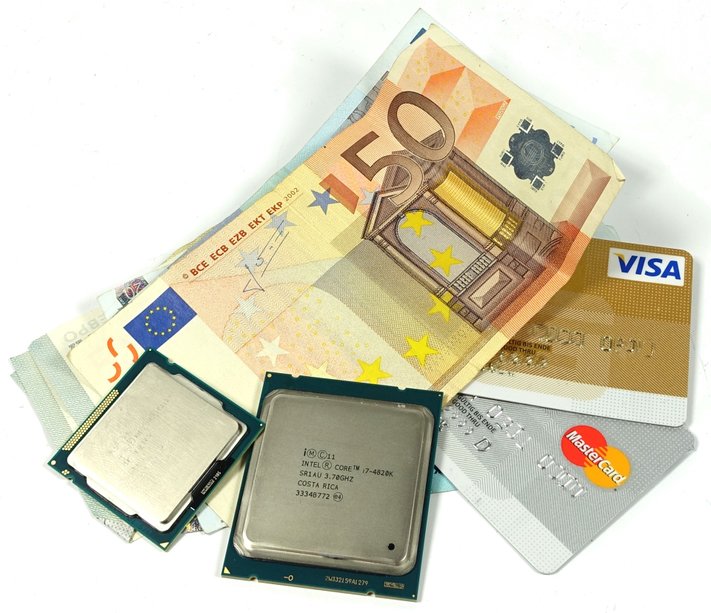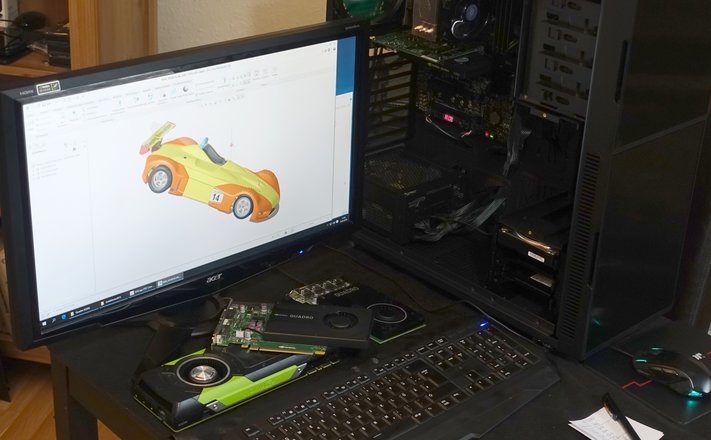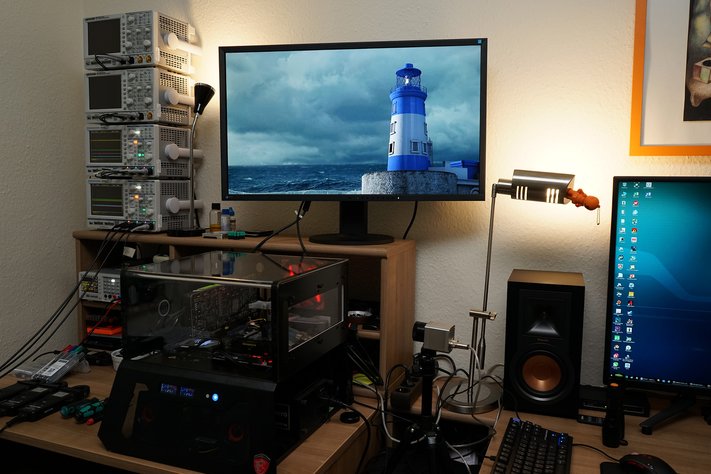Much does not always help much – but on the other hand, a system that still looks slightly oversized today may reach its limits tomorrow. Therefore, one can probably never have enough performance and there is also a certain feeling of future and planning security, if one (justifiably) believes that one is still well prepared for future requirements.
Update from May 3, 2018
We added the new AMD Ryzen 7 2700X, 2700, Ryzen 5 2600X and 2600, as well as repeated some older benchmarks with new BIOS and tested plausibility. All benchmarks are now up to date, but may differ slightly from older publications.
Such an assumption can work, but it does not have to. First, you will have to think about what the PC needs to be prepared for in the present and near future, and what might be added later. That's exactly what you should focus on – and plan a little reserve.
Unfortunately, however, more performance always costs more money – often disproportionately – which is why one has to question the benefits of a (massive) performance reserve extremely critically.

We had just touched on the subject: often enough, demands, desires and financial possibilities are not very close together. But here the miracle medicine "reason" helps, which should lead the user to a willingness to compromise and an insight into the immutable facts. Aspects such as ecology (power consumption and longevity) and economics (effort and benefits) should always be in a healthy relationship. We just wrote it: It's best to buy only what you really need (or. in the near future).
In addition, we also offer instructions on how to check a system for stability and performance limits after assembly:
- Part 1: Test graphics cards correct
ly - Part 2: CPU stability test and stress tests of the overall system
But it's not just gaming. Whether 2D or 3D output – the requirements in the (semi-) professional area or the home office are very diverse. Depending on the standard software used or the program suites, you will come across very long-lasting software products with an often multi-year usage cycle. This also means that many (older) programs are more likely to (still) rely on a high IPC and hardly scale properly over many threads, or in return also perform calculations in parallel, the load of which is so high that in the case of incorrectly used CPUs, the performance of the graphics output suffers disproportionately.

For many areas, it no longer necessarily has to be an Intel Xeon, because often the consumer version is enough if you can do without ECC RAM. With the budget thus saved, there is almost always more room for manoeuvre for the graphics hardware.
The test setup
We have already described the test methodology in the basic article "How we test graphics cards, as of February 2017" in great detail and so we now only refer to this detailed description for the sake of simplicity. So if you want to read everything again, you are welcome to do so.
In this case, only the hardware configuration with CPU, RAM, motherboard, as well as the new cooling is different, so that the summary in table form quickly gives a brief overview of the system used here and today:
| Test systems and measuring rooms | |
|---|---|
| Hardware: |
AMD Socket AM4 (Ryzen Gen.2 CPUs) MSI X470 Gaming M7 AC 2x 8GB G.Skill FlareX DDR4-3200 AMD Socket AM4 (Ryzen Gen.1 CPUs) MSI X370 Tomahawk 2x 8 GB G.Skill TridentZ DDR4-3200 RGB AMD Socket AM4 (APUs) AMD Socket SP3 (TR4) AMD Socket AM3+ Intel Socket 1151 (Z270): Intel Socket 2011v3: 1x 1 TByte Toshiba OCZ RD400 (M.2, System SSD) |
| Cooling: |
Alphacool Ice Age 2000 Chiller Alphacool Ice Block XPX Thermal Grizzly Kryonaut (for cooler change) |
| Monitor: | Eizo EV3237-BK |
| Housing: |
Lian Li PC-T70 with expansion kit and modifications Modes: Open Benchtable, Closed Case |
| Power consumption: |
non-contact DC measurement on the PCIe slot (Riser-Card) non-contact DC measurement on the external PCIe power supply direct voltage measurement at the shunts, the respective feeders and the power supply Reading out the motherboard sensors 2x Rohde & Schwarz HMO 3054, 500 MHz multi-channel oscillograph with memory function 4x Rohde & Schwarz HZO50, current togor adapter (1 mA to 30 A, 100 KHz, DC) 4x Rohde & Schwarz HZ355, touch divider (10:1, 500 MHz) 1x Rohde & Schwarz HMC 8012, digital multimeter with storage function |
| Thermography: |
Optris PI640, infrared camera PI Connect evaluation software with profiles |
| Acoustics: |
NTI Audio M2211 (with calibration file) Steinberg UR12 (with phantom power for the microphones) Creative X7, Smaart v.7 own low-reflection measuring room, 3.5 x 1.8 x 2.2 m (LxTxH) Axial measurements, perpendicular to the center of the sound source(s), measuring distance 50 cm Noise in dBA (Slow) as RTA measurement Frequency spectrum as a graph |
- 1 - Einführung und Testsystem
- 2 - Gaming: 3DMark Fire Strike, 3DMark Time Spy
- 3 - Gaming: Ashes of the Singularity, Civilization VI
- 4 - Gaming: GTA V, Warhammer 40K: Dawn of War III
- 5 - Gaming: Hitman 2016, Project Cars
- 6 - Gaming: Far Cry Primal, VRMark
- 7 - Workstation VGA: AutoCAD 2016 in 2D und 3D
- 8 - Workstation VGA: Solidworks 2015 und Creo 3.0
- 9 - Workstation VGA: Catia und Maya
- 10 - Workstation VGA: Cinebench, 3ds Max und Blender
- 11 - Workstation CPU: Solidworks 2015 und Creo 3.0
- 12 - Workstation-CPU: Blender und Luxrender
- 13 - Workstation-CPU: 3ds Max Rendering und Compute
- 14 - Workstation-CPU: Handbrake und 7Zip
- 15 - Leistungsaufnahme Idle & CAD-Workload
- 16 - Leistungsaufnahme Gaming/3D & Torture
- 17 - Zusammenfassung und Fazit


































Kommentieren